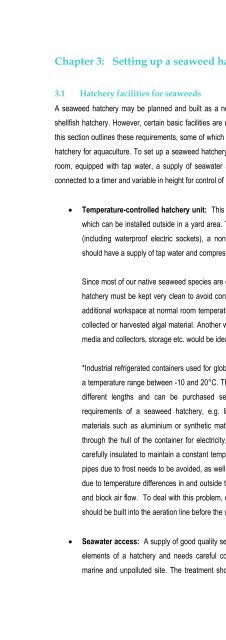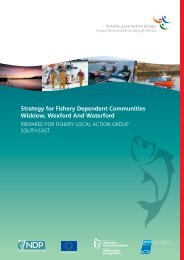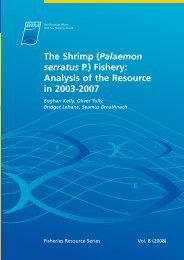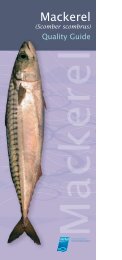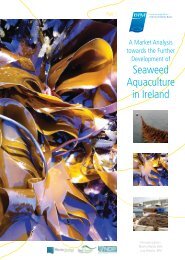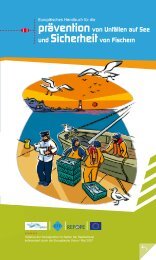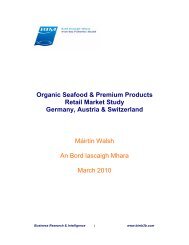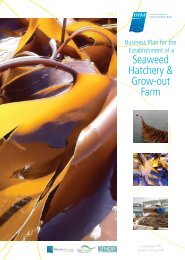Cultivating Palmaria palmata - Bord Iascaigh Mhara
Cultivating Palmaria palmata - Bord Iascaigh Mhara
Cultivating Palmaria palmata - Bord Iascaigh Mhara
You also want an ePaper? Increase the reach of your titles
YUMPU automatically turns print PDFs into web optimized ePapers that Google loves.
Chapter 3: Setting up a seaweed hatchery<br />
3.1 Hatchery facilities for seaweeds<br />
A seaweed hatchery may be planned and built as a new unit or it may be integrated into an existing fish- or<br />
shellfish hatchery. However, certain basic facilities are required for the early stages of seaweed cultivation and<br />
this section outlines these requirements, some of which will be met by similar facilities available in other types of<br />
hatchery for aquaculture. To set up a seaweed hatchery, it is essential to have a temperature-controlled culture<br />
room, equipped with tap water, a supply of seawater and of air, a filter unit for seawater, fluorescent lamps<br />
connected to a timer and variable in height for control of intensity.<br />
Temperature-controlled hatchery unit: This can be an in-built cold-room or a refrigerated container*<br />
which can be installed outside in a yard area. The culture room should have seawater resistant fittings<br />
(including waterproof electric sockets), a non-slip waterproof floor and bottom drainage. The room<br />
should have a supply of tap water and compressed air, and convenient access to seawater.<br />
Since most of our native seaweed species are cultured at relatively low temperatures (5-15°C), and the<br />
hatchery must be kept very clean to avoid contamination of the cultures, it is almost essential to have<br />
additional workspace at normal room temperature that can be used as a wet-laboratory for processing<br />
collected or harvested algal material. Another warmer room for microscope work, preparation of culture<br />
media and collectors, storage etc. would be ideal.<br />
*Industrial refrigerated containers used for global transport are equipped with effective cooling units for<br />
a temperature range between -10 and 20°C. They are of standard width and height but are available in<br />
different lengths and can be purchased second hand. The interior can be customised to the<br />
requirements of a seaweed hatchery, e.g. lining floor and possibly walls with saltwater-resistant<br />
materials such as aluminium or synthetic materials to minimise corrosion. Any holes that are drilled<br />
through the hull of the container for electricity, water and air supplies or for drainage will need to be<br />
carefully insulated to maintain a constant temperature in the container throughout the year. Rupture of<br />
pipes due to frost needs to be avoided, as well as heavy condensation in the aeration pipes in summer<br />
due to temperature differences in and outside the container. Such condensation can collect in U-bends<br />
and block air flow. To deal with this problem, outdoor air pipes should be insulated and a water outlet<br />
should be built into the aeration line before the supply pipes are divided to serve the culture tanks, etc.<br />
Seawater access: A supply of good quality seawater is one of the most essential and most expensive<br />
elements of a hatchery and needs careful consideration. Seawater should be pumped from a fully<br />
marine and unpolluted site. The treatment should comprise coarse filtering, sediment settlement in a<br />
19


